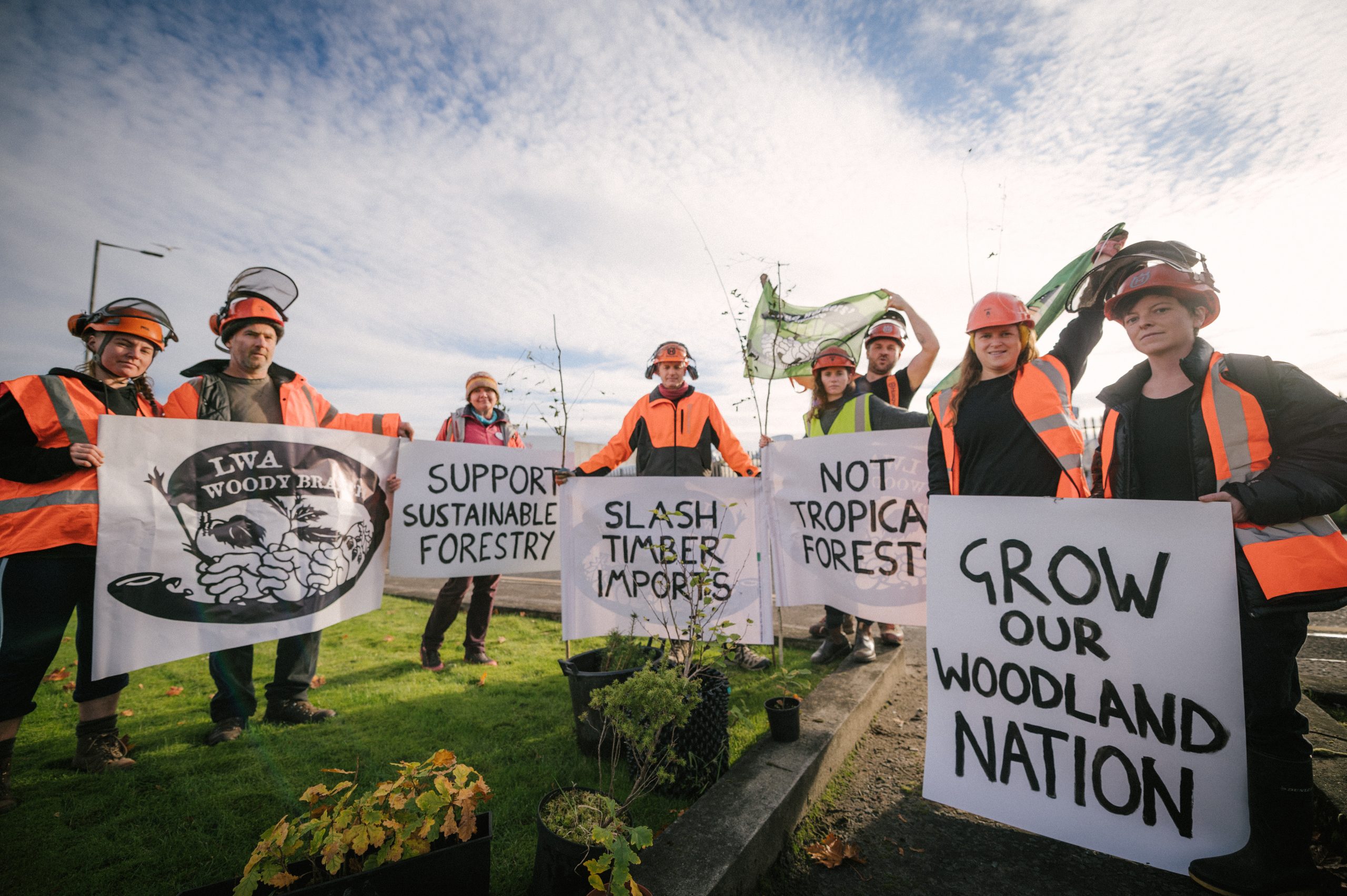On Friday, the LWA Woody Branch staged an action outside the International Timber yard in Grangemouth, Scotland, to demand that the UK Government supports a transition to sustainable forestry in the UK, and uses political leverage and public finance to build a thriving domestic timber industry.
The UK has one of the lowest levels of first cover in Europe, with only 13% of its total land area covered in woodland.
Consequently, the UK currently imports 95% of its timber, and in light of Monday’s COP26 announcement which saw governments make a joint pledge to halt global deforestation by 2030, LWA Woody Branch members are stressing the need to build a vibrant domestic timber industry and support sustainable woodland management on UK turf.
If the UK is serious about its pledge to halt global deforestation by 2030, it must first acknowledge its huge dependence on imported timber.
As part of its Net-Zero strategy, in May this year head of Defra, George Eustice, made commitments to plant 30,000 hectares of trees each year by 2024. Not only were these commitments lacking the ambition needed to realise the levels of carbon sequestration required to achieve net zero, but they are also commitments which aren’t being realised.
Doubt about whether this 2024 target will be met is foreshadowed by the government’s previous failure to meet their 2015 tree-planting target – a plan which aimed to plant 11 million trees by 2020.
The UK needs to be bold in its commitments to boost woodlands and tree-cover, not only for carbon sequestration, increased biodiversity and environmental benefits like soil health and flood prevention, but also in order to create a thriving timber industry which creates fulfilling employment opportunities and builds a skilled labour force in the forestry sector.

Photo credit: Joya Berrow
Oli Rodker from the Landworkers’ Alliance has said:
“Government targets for tree planting are way off the mark. If we want to really make the most of trees and their ability to sequester carbon as a serious climate mitigation strategy, we need to make bigger and more ambitious plans for woodland creation and management.
We’re talking about millions of hectares here – not thousands. Tree-planting cannot be used as an excuse to carry on business as usual – carbon emissions absolutely must be cut at their source. But creating new woodlands in the UK – if ambitious enough – does hold massive potential in helping us to mitigate 1.5 degrees of warming.
We recognise that this is no small-task, and that tree-planting will require a lot of land, but this is why we must integrate trees into our living and working landscapes; so that they’re not just hectares devoted to carbon sequestions, but also to human enjoyment, outdoor education, employment, skill and knowledge-building, biodiversity and environmental benefits.
I don’t believe that there is such a thing as a ‘silver bullet’ when it comes to climate and land-use – but supporting UK sustainable woodland management and timber production is pretty close.”
Olly Craigan, a woodland manager from Wales, and Woodlands Coordinator at the Landworkers’ Alliance has said:
“Half of UK woodlands aren’t being managed at all – and they need active management to survive! We’re here today in Grangemouth to demand that the UK Government meaningfully supports sustainable forestry, and helps build a woodland nation.”
“Timber is a sustainable building material, taking in carbon dioxide from the atmosphere as the tree grows, and then storing it inside the wood once it is felled and used for construction.
“If we aim for 7.2 million hectares of trees to be planted over the next ten years – which would mean 4 million hectares of new woodland – this could go a long way to meeting the UK’s Net Zero goal.”
If you haven’t already, make sure you check out the LWA Woody Branch’s new video.

